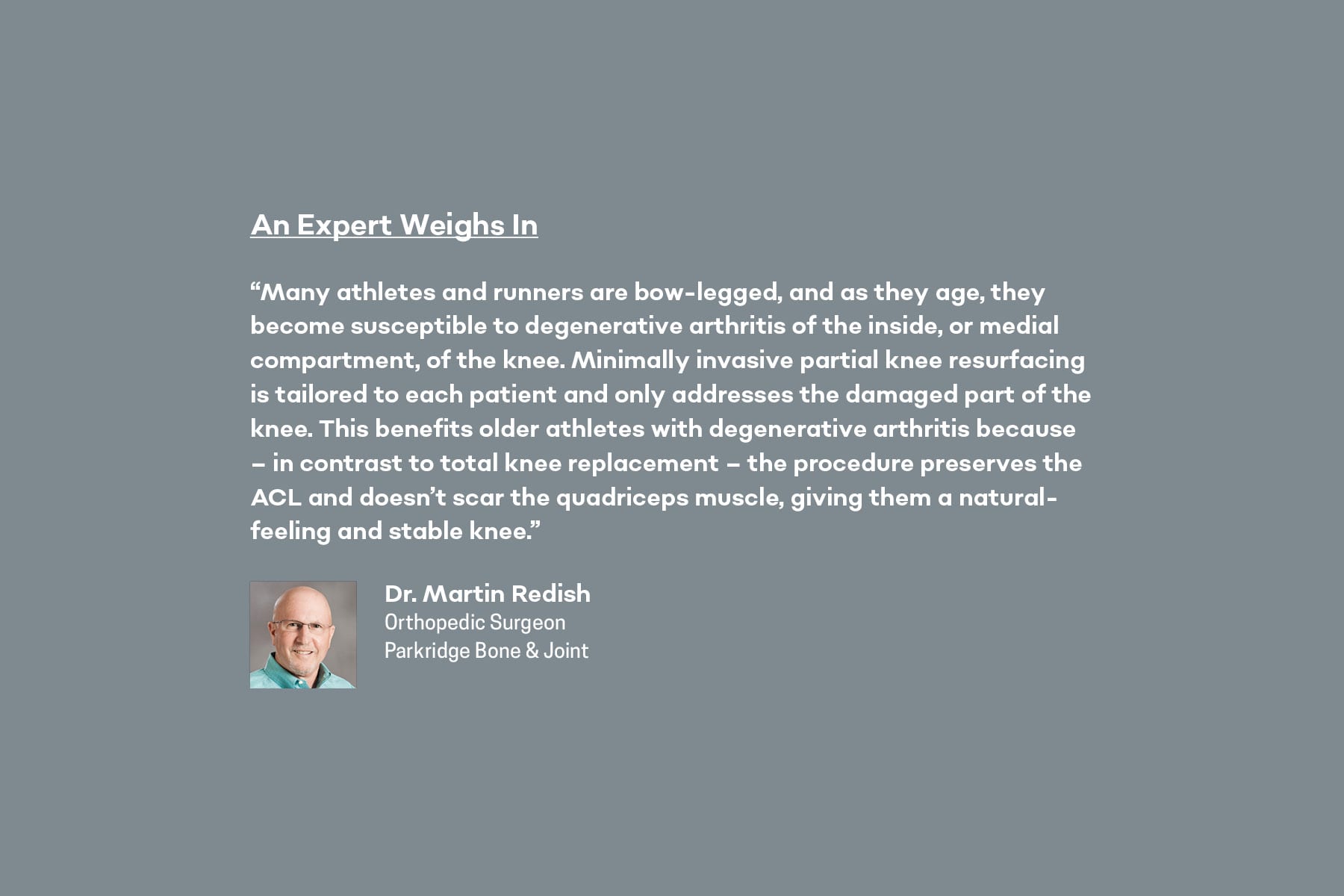Annual Bone & Joint Section
Bones and joints are easily taken for granted, but they’re absolutely vital to our health and day-to-day activities. In the following section, learn how to keep your bones and joints healthy so that you can keep an active lifestyle for many more years to come.
By Anna Hill
This innovative approach offers several benefits for those suffering from joint pain.
Who’s a Good Candidate?
There are three primary compartments to your knee, and two of them are weight-bearing. Partial knee resurfacing is a procedure that’s ideal for someone who has been diagnosed with arthritis in one of those weight-bearing compartments and hasn’t found nonsurgical treatments, such as medication, to be sufficient when it comes to restored mobility and pain relief. Most patients who are a good candidate for this procedure often experience pain on one side of their knee while exerting themselves, but not necessarily while at rest.
Partial Knee Resurfacing vs. Total Knee Resurfacing
Total knee resurfacing – also known as knee replacement – differs greatly from partial knee resurfacing in both recovery time and the procedure itself. When a knee is replaced, the quadriceps muscle is cut, and all parts of the knee joint are then resurfaced with metal and plastic components. However, during a partial knee resurfacing procedure, only one element of the knee joint is resurfaced, which results in a more natural and flexible feel thanks to the fact that the other, still well-functioning compartments of your knee are left in place. Furthermore, the procedure for partial resurfacing is less invasive, which can lead to less pain and swelling, a shorter hospitalization, and a quicker recovery time.
Recent Advancements
Previously, partial knee resurfacing experienced limited popularity due to the fact that the incision size and recovery time weren’t any different from that of a total knee replacement procedure, therefore giving little incentive to choose a partial resurfacing over a full resurfacing. Fortunately, the procedure has undergone advancements in recent years and has been much improved by the Repicci method, which does not require the cutting of muscle and uses a smaller incision. The implants used in the procedure have also improved, which results in a reduced need for bone removal as well as a faster recovery.
Recovery
Partial knee resurfacing can usually be done in an outpatient setting, which means patients often don’t need to stay at the hospital longer than one night. Formal physical therapy is rarely needed as part of the recovery process, and most patients are able to return to daily activities without assistance within one to two weeks post-op. Of course, this may vary depending on each individual patient’s needs. HS
See Related Articles:








